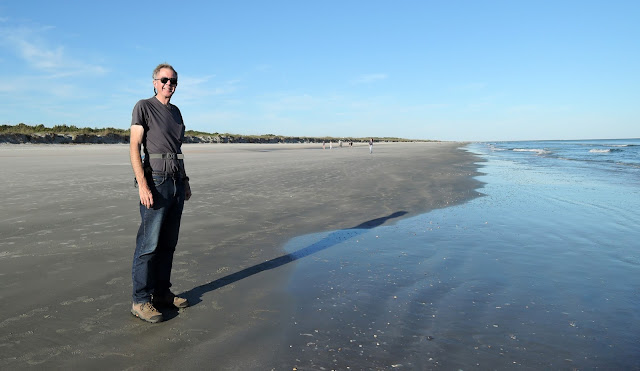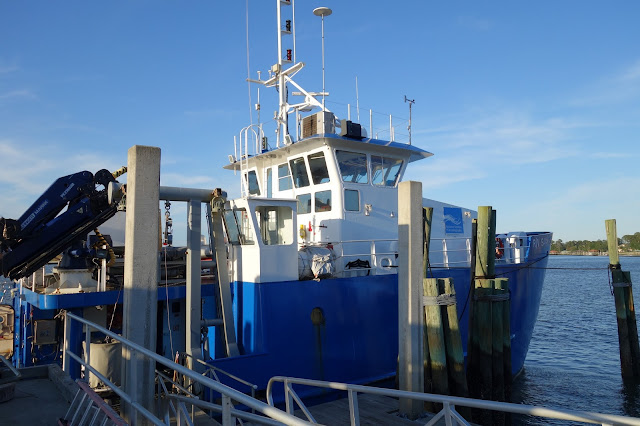Day 13: 13 November 2015 Jacksonville NC to Charleston SC (242 miles
We left Jacksonville NC and stopped in Wilmington NC to look at the downtown area along the Cape Fear River.
Bellamy Mansion in WilmingtonHuntington Beach State Park, NC
Newly hatched turtles instinctively head for the brightest light which used to be the direction of the sea.
We hit the road again at 5pm and stopped for gas in South Carolina where the price of gas is about $1.90 per gallon. [That's NZ$0.85 per liter].
By 7pm we got to our motel, Creekside Lands Inn, on the southwestern outskirts of Charleston.
Day 14: 14 November 2015 Charleston SC (ca 9 miles)
We booked a walking tour, but because we arrived a bit early, we wandered around for 20 minutes.
This is Saint Philips Episcopal Church. Built 1836, spire completed 1850. Constructed from brick with stucco made to look like cut stone.
We booked a "Free Walking Tour" over the internet. Actually, it cost a dollar to make the booking and the website made it clear that a gratuity at the end of the tour would be most appropriate. Our walking-tour guide, Scott Nelson, had worked in Washington DC doing history / preservation work on buildings and museums before moving to Charleston several years ago. His part-time day job was with the Historic Charleston Foundation, but he supplemented that with walking tours, something he did quite well.
Here he is pointing out the recycled slave-made hand-formed bricks in a renovated building, the Docker Street Theatre.
Dock Street TheaterHere he is pointing out the recycled slave-made hand-formed bricks in a renovated building, the Docker Street Theatre.
Several streets in the historic district are made from cobbles that came to Charleston as ships' ballast.
First indoor slave market in Charleston -- now a museum.
"Rainbow Row", a street of brightly colored houses near the Charleston waterfront.
Many older houses had a piazza (pea-AH-zah) [a veranda] on the south side to shade the windows and keep the house cooler.
Aiken-Rhett house, a Charleston home once the home of South Carolina governor William Aiken Jr. There has been no attempt to restore the house, rather it is being preserved as it was when the Historic Charleston Foundation purchased the house in 1995.
Kitchen in one of the outbuildings.One of many wedding parties we saw during the day.
The Huguenot Church.
Stair well from the third floor.
Another wedding party, complete with brass band, that would have fit right in to New Orleans and almost caused a disaster when it spooked the horses pulling a carriage of tourists.
In the background, Ravenel Bridge over Cooper River.
Window box on street not far from Waterfront Park.
Fort Sumter was built to defend Charleston Harbor.
At the start of the Civil War (1861) it was nearly complete and three storeys high.
Union forces pounded it with artillery fire, reducing it to a single storey and this is how it appears today.
Rubble from the upper levels served to protect the lower level.
There are still artillery projectiles embedded in the brickwork.In the face of this monument to former carnage, visitors are warned not to bring firearms into the fort.
In the afternoon we went to Magnolia Plantation on the Ashley River.
The plantation was, and still is, owned by the Drayton family.
It is best known for its gardens,
especially the camellias,
but also others including these orchids.
There are extensive walks through the gardens
and around ponds.The trees (eg above) are covered with Spanish moss. In fact, most trees are covered with it, especially the live oaks.
Cypress trees.
Cypress "knees". It was once thought these knees provided oxygen to tree roots in oxygen-poor water, but there is no evidence for that. Their function remains unknown.
Walk in lowland forest near the Edisto River.
Former Carolina rice plantation now Savannah National Wildlife Refuge. The water control was originally installed for growing rice and is now used as part of the refuge management.
Anhinga in one of the canals.
At Savannah GA we tried to go to Wormsloe, but picked the one day of the week it is closed. This photo is of the 1.5-mile Avenue of the Oaks.
Instead, we went to Isle of Hope Marina on the Intercoastal Waterway
and to the nearby University of Georgia Aquarium on Skidaway Island.
The Aquarium maintained a nature trail through the woods along the shore.
Mushroom growing through forest litter.
Fresh-water turtle in pond at the Aquarium.Day 17: 17 November 2015 Savannah GA
Despite the success of our walking tour in Charleston SC, we took a 'tram' tour of Savannah. It included a cast of characters who got on the tram to present monologues about Savannah history. In this case, it was a thinly disguised promotion of a ghost tour run by the same tour company--but entertaining nonetheless.
Other tourists opted for horse-drawn carriages.
At the docks along the river another actor jumped aboard our tram. He was a 'factor' or cotton buyer who explained the cotton trade and the way it worked in antebellum Savannah.
After 90 minutes of meandering around Savannah streets in a winding and criss-crossing pattern, we got off the trolley to see some of the same things on foot. This is a monument to soldiers from Haiti who came to fight in the American Revolutionary War. The child drummer on the left is Henri Christophe, who later became a leader for Haitian independence from France, and eventually was King of Haiti.
We bought a pass to three museums / houses. Our first was the Telfair Academy of Arts and Sciences, established in 1886. It is housed in Telfair Mansion, constructed for Alexander Telfair in 1819.
The old kitchen downstairs.
The house included an extensive art collection displaying rather catholic tastes. Here is the large gallery on the ground floor.
Julian Story (American born England 1857-1919)
The Black Prince at Crécy, 1888.
Lebanese-American Kahlil Gibran is best known for the book The Prophet, but well before he wrote that, Lila Cabot Perry (American, 1848-1933) painted this portrait of him at age 15 in about 1898.
The Jepson Center for the Arts which opened in 2006 was the second of our three museums. This included a major impressionist exhibit centered on Monet, but including many others from both Europe and North America. No photos allowed.
Photos were allowed in an exhibit of Mickalene Thomas (b. 1971) who recently had a residence at Giverny.
Bird Girl taken from a cemetery to protect the statue in the aftermath of its popularity as the cover photo for Midnight in the Garden of Good and Evil.
Great ice cream at Leopold's.
A sculpture on the ceiling of the entryway to a building in the historic district of Savannah.
The final house/museum Telfair Museum's Owens-Thomas House [no photos allowed inside]. William Jay designed both this house as well as the Telfair Mansion.
Statue of General James Oglethorpe, founder of Savannah. Oglethorpe arrived with 120 colonists in 1733.
Wesley Monumental United Methodist Church. John Wesley spent two years from 1735-1737 in Savannah before returning to England.
Some bricks recycled as pavers.
Next we move from historic southern cities
to the barrier islands of Sapelo and Cumberland
.oOo.




















































































Looks stunning, thanks so much, what beautiful weather and buildings. Pleased to see Midge in summer gear!
ReplyDelete